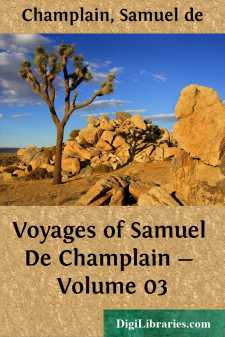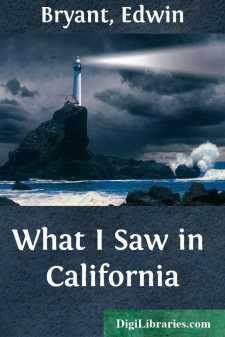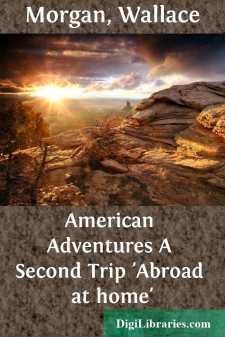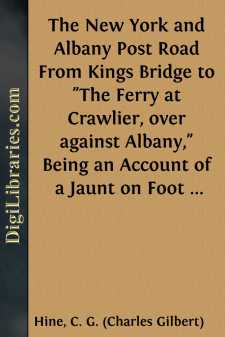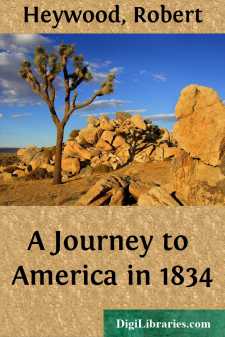Travel
- Africa 29
- Alaska 3
- Asia 46
- Australia & Oceania 26
- Canada 31
- Caribbean & West Indies 5
- Central America 1
- Europe 151
- General 39
- Maps & Road Atlases 1
- Mexico 10
- Middle East 18
- Polar Regions 7
- Reference 11
- Restaurants 1
- Russia 6
- South America 16
- United States
United States Books
Sort by:
by:
Julia M. Sloane
INTRODUCTION The following sketches are entirely informal. They do not cover the subject of Southern California in any way. In fact, they contain no information whatever, either about the missions or history—a little, perhaps, about the climate and the fruits and flowers of the earth, but that has crept in more or less unavoidably. They are the record of what happened to happen to a fairly...
more...
It is generally conceded that the Grand Cañon of Arizona beggars description. I shall therefore endeavor to refrain from doing so. I realize that this is going to be a considerable contract. Nearly everybody, on taking a first look at the Grand Cañon, comes right out and admits its wonders are absolutely indescribable—and then proceeds to write anywhere from two thousand to fifty thousand words,...
more...
by:
John Fiske
PREFACE. The present work is the outcome of two lines of study pursued, with more or less interruption from other studies, for about thirty years. It will be observed that the book has two themes, as different in character as the themes for voice and piano in Schubert's "Frühlingsglaube," and yet so closely related that the one is needful for an adequate comprehension of the other. In...
more...
CHAPTER I. DEPARTURE FROM FRANCE TO RETURN TO NEW FRANCE.—THE DANGERS AND OTHER EVENTS WHICH OCCURRED UP TO THE TIME OF ARRIVAL AT THE SETTLEMENT. We set out from Honfleur on the first day of March. The wind was favorable until the eighth, when we were opposed by a wind south-southwest and west-northwest, driving us as far as latitude 42°, without our being able to make a southing, so as to sail...
more...
by:
Edwin Bryant
CHAPTER I. Geographical sketch of California Its political and social institutions Colorado River Valley and river of San Joaquin Former government Presidios Missions Ports and commerce. For the general information of the reader, it will be proper to give a brief geographical sketch of California, and some account of its political and social institutions, as they have heretofore existed. The district...
more...
Foreword In California's imaginary Hall of Fame, Bret Harte must be accorded a prominent, if not first place. His short stories and dialect poems published fifty years ago made California well known the world over and gave it a romantic interest conceded no other community. He saw the picturesque and he made the world see it. His power is unaccountable if we deny him genius. He was essentially an...
more...
by:
Wallace Morgan
CHAPTER I ON JOURNEYS THROUGH THE STATESOn journeys through the States we start,... We willing learners of all, teachers of all, lovers of all.We dwell a while in every city and town ...—Walt Whitman. Had my companion and I never crossed the continent together, had we never gone "abroad at home," I might have curbed my impatience at the beginning of our second voyage. But from the time we...
more...
The Hudson Valley, above all other places in this country, combines historic and romantic interest with the beauties of nature. It is one hundred and fifty miles crowded with the splendors of mountain and forest and river, and replete with incident and legend. To quote George William Curtis: "Its morning and evening reaches are like the lakes of a dream." Everyone who visits New York comes or...
more...
by:
Robert Heywood
THURSDAY, MAY 1ST, 1834. Left home quarter past 10 accompanied by my three friends, Mr. Baker, Mr. John Dean, and Cousin Peter Heywood. Took a walk to the Prince's Dock; found my berth situated near the foot of the staircase. Thence we proceeded to Mr. Thornley's office and met with the kindest attention. Received several letters of introduction and valuable information; recommended me to...
more...
by:
Mark Twain
THE 'BODY OF THE NATION' BUT the basin of the Mississippi is the BODY OF THE NATION. All the other parts are but members, important in themselves, yet more important in their relations to this. Exclusive of the Lake basin and of 300,000 square miles in Texas and New Mexico, which in many aspects form a part of it, this basin contains about 1,250,000 square miles. In extent it is the second...
more...





